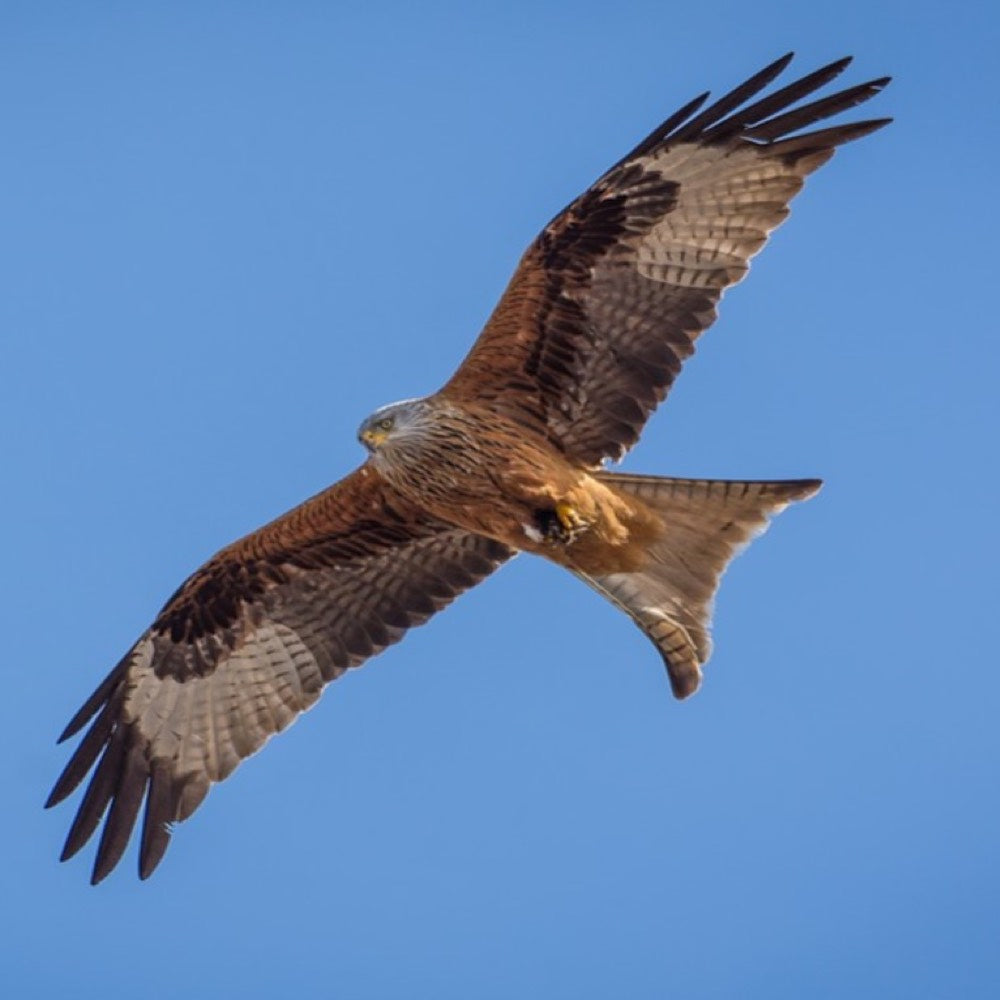

Completely extinct in England and Scotland, a few breeding pairs remained in the Cothi and Tywi valleys of mid-west Wales. In Britain, the red kite was pushed close to extinction due to extreme persecution and collectors stealing eggs between the 1800’s and mid-1900’s. Kites are well-known for their aeronautical skills, including a dramatic twist that sees them fly briefly upside-down, flashing their talons in warning to any birds trying to mob them. Females signal to their young to play dead should danger approach. Europe’s smallest eagle, the booted eagle, otherwise known as the Booted Hawk Eagle, prefers the warmer climes of southern Europe and south central Asia and whilst not threatened globally, its population within Europe is.

They usually mate for life and build untidy nests from twigs in the high branches of trees, where they lay 1-4 eggs annually. The red kite is a medium-large raptor with a characteristic long, deeply forked tail that is red above and pale below. Red kites can thrive in a wide range of habitats including woodlands, moors, and wetlands.

She has a powerful identity with the Mouse totem. Crow people are the keepers of the sacred laws. Rather than purely hunting for food, red. Now a protected species and following several reintroduction attempts, the number of red kites has recovered and they can be spotted in lots of places across the UK. Kites scavenge carrion and prey on worms, small birds, and small mammals. OK, so now let’s look at what might give us some clarity in her visit. Once considered a threat to game birds and domestic animals like cats and dogs, the red kite was hunted close to extinction in the UK. In the Welsh population there is a rare white form of kite accounting for approximately 1% of hatchlings. They have pale grey heads and bright-yellow legs. Their plumage is a rich chestnut, shot with black, and their dark brown wings have white patches towards the tip. Kites are easy to identify thanks to their distinctive forked tail.


 0 kommentar(er)
0 kommentar(er)
